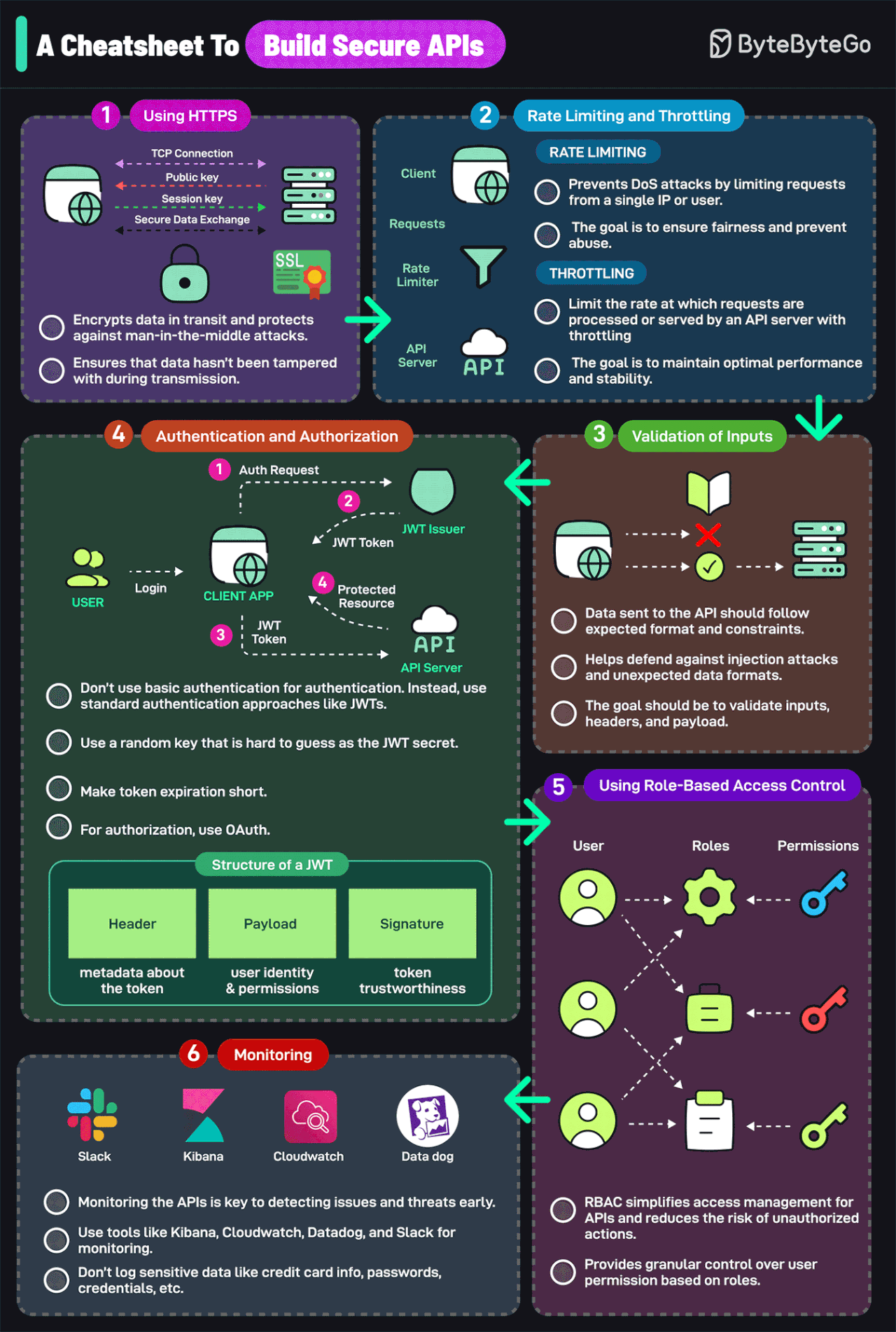EP135: Big Data Pipeline Cheatsheet for AWS, Azure, and Google Cloud
The Enterprise Ready Conference for engineering leaders (Sponsored)
The Enterprise Ready Conference is a one-day event in SF, bringing together product and engineering leaders shaping the future of enterprise SaaS.
The event features a curated list of speakers with direct experience building for the enterprise, including OpenAI, Vanta, Checkr, Dropbox, and Canva.
Topics include advanced identity management, compliance, encryption, and logging — essential yet complex features that most enterprise customers require.
If you are a founder, exec, PM, or engineer tasked with the enterprise roadmap, this conference is for you. You’ll get detailed insights from industry leaders that have years of experience navigating the same challenges you face today. And best of all, it’s completely free since it’s hosted by WorkOS.
This week’s system design interview:
Big Data Pipeline Cheatsheet for AWS, Azure, and Google Cloud
A Cheatsheet on Comparing API Architectural Styles
10 Key Data Structures We Use Every Day
A Cheatsheet to Build Secure APIs
SPONSOR US
Big Data Pipeline Cheatsheet for AWS, Azure, and Google Cloud
Each platform offers a comprehensive suite of services that cover the entire lifecycle:
Ingestion: Collecting data from various sources
Data Lake: Storing raw data
Computation: Processing and analyzing data
Data Warehouse: Storing structured data
Presentation: Visualizing and reporting insights
AWS uses services like Kinesis for data streaming, S3 for storage, EMR for processing, RedShift for warehousing, and QuickSight for visualization.
Azure’s pipeline includes Event Hubs for ingestion, Data Lake Store for storage, Databricks for processing, Cosmos DB for warehousing, and Power BI for presentation.
GCP offers PubSub for data streaming, Cloud Storage for data lakes, DataProc and DataFlow for processing, BigQuery for warehousing, and Data Studio for visualization.
Over to you: What else would you add to the pipeline?
A Cheatsheet on Comparing API Architectural Styles
It covers the 6 most popular API architectural styles:
SOAP
REST
GraphQL
gRPC
WebSocket
Webhook
Over to you: Which other architectural style have you used?
200+ hours of research on Advanced AI Tools for Technical Leaders & Professionals (Sponsored)
Imagine cutting hours of manual work, solving complex issues instantly, and having AI optimise your entire workflow—making you 10x more productive.
This FREE 3 hour Mini Crash Course on AI will help you save 16+ hours every week & put your 50% of your work on autopilot.
Save your seat now (usually $399 but free for first 100 readers)
You will learn 20+ AI tools & use AI to:
Apply data-backed insights to drive faster, smarter decision-making
Streamline reporting, content generation, and operational processes in seconds
Detect performance bottlenecks in real time to keep systems running smoothly and efficiently.
Dynamically balance load in event-driven systems by routing traffic and predicting spikes, so you never need to adjust manually.
Accelerates big data processing by automating insights and flagging anomalies instantly for faster problem-solving, and much more!
By letting AI handle these critical tasks, you’ll save hours each week, unlock more time for strategic thinking & innovation and spend more time with family.
10 Key Data Structures We Use Every Day
list: keep your Twitter feeds
stack: support undo/redo of the word editor
queue: keep printer jobs, or send user actions in-game
hash table: cashing systems
Array: math operations
heap: task scheduling
tree: keep the HTML document, or for AI decision
suffix tree: for searching string in a document
graph: for tracking friendship, or path finding
r-tree: for finding the nearest neighbor
vertex buffer: for sending data to GPU for rendering
Over to you: Which additional data structures have we overlooked?
A Cheatsheet to Build Secure APIs
An insecure API can compromise your entire application. Follow these strategies to mitigate the risk:
Using HTTPS
Encrypts data in transit and protects against man-in-the-middle attacks.
This ensures that data hasn’t been tampered with during transmission.Rate Limiting and Throttling
Rate limiting prevents DoS attacks by limiting requests from a single IP or user.
The goal is to ensure fairness and prevent abuse.Validation of Inputs
Defends against injection attacks and unexpected data format.
Validate headers, inputs, and payloadAuthentication and Authorization
Don’t use basic auth for authentication. Instead, use a standard authentication approach like JWTs
Use a random key that is hard to guess as the JWT secret
Make token expiration short
For authorization, use OAuthUsing Role-based Access Control
RBAC simplifies access management for APIs and reduces the risk of unauthorized actions.
Granular control over user permission based on roles.Monitoring
Monitoring the APIs is the key to detecting issues and threats early.
Use tools like Kibana, Cloudwatch, Datadog, and Slack for monitoring
Don’t log sensitive data like credit card info, passwords, credentials, etc.
Over to you: What else would you do to build a secure API?
SPONSOR US
Get your product in front of more than 1,000,000 tech professionals.
Our newsletter puts your products and services directly in front of an audience that matters - hundreds of thousands of engineering leaders and senior engineers - who have influence over significant tech decisions and big purchases.
Space Fills Up Fast - Reserve Today
Ad spots typically sell out about 4 weeks in advance. To ensure your ad reaches this influential audience, reserve your space now by emailing sponsorship@bytebytego.com








https://www.febspot.com/video/2533989
Interesting Summary. To be honest the System design pdf has become my go to resource in recent times.
Under big data pipeline, RDS and Dynamo has been mentioned under the Data warehouse block but I haven't come across use cases where these are use in warehousing. Could anyone share an example where you have seen this.
Though the description mentions Redshift only under warehouse the diagram shows RDS and DynamoDB under the warehouse Or am I reading the diagram incorrectly?